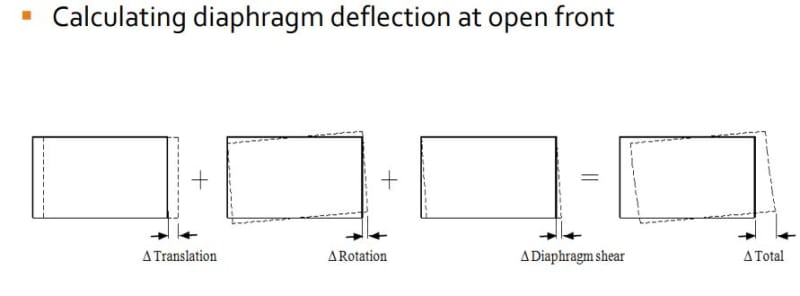Hi Everyone,
I am an engineer in training and I have a quick question regarding lateral bracing for structural steel buildings.
I am currently working on the design of a standard one-storey structural steel building (square geometry, retail store). The front wall of the building is almost entirely made up of windows. In this wall, I need to include a type of bracing to resist lateral wind loading however, the architect + client prefer not to have bracing members exposed in the windows.
I would be able to add in cross bracing (or X bracing) in the upper section of one of the frames (as there are no windows here) – see attached sketch. Note that this is a one-storey building, the beam shown at mid-span of the frame in the sketch is a horizontal strut that will also be used to support a small entrance canopy.
My question – is this bracing configuration acceptable? I am concerned about load path. It has always been my understanding that braced frames (single or multi-storey) must be designed so that the lateral load can travel through the bracing members and make its way to the foundation. I might be overthinking things, but my configuration does not appear to allow that.
I know that incorporating a moment frame would be an option, but I would like to stick with bracing if possible.
Thank you.
I am an engineer in training and I have a quick question regarding lateral bracing for structural steel buildings.
I am currently working on the design of a standard one-storey structural steel building (square geometry, retail store). The front wall of the building is almost entirely made up of windows. In this wall, I need to include a type of bracing to resist lateral wind loading however, the architect + client prefer not to have bracing members exposed in the windows.
I would be able to add in cross bracing (or X bracing) in the upper section of one of the frames (as there are no windows here) – see attached sketch. Note that this is a one-storey building, the beam shown at mid-span of the frame in the sketch is a horizontal strut that will also be used to support a small entrance canopy.
My question – is this bracing configuration acceptable? I am concerned about load path. It has always been my understanding that braced frames (single or multi-storey) must be designed so that the lateral load can travel through the bracing members and make its way to the foundation. I might be overthinking things, but my configuration does not appear to allow that.
I know that incorporating a moment frame would be an option, but I would like to stick with bracing if possible.
Thank you.

